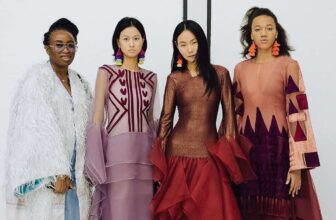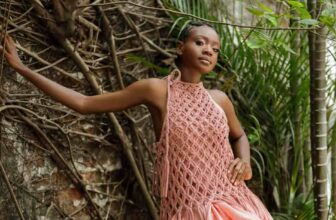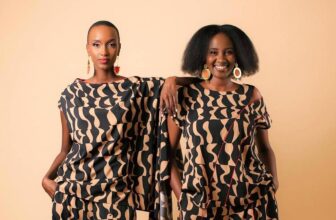In Africa, no significant traditional celebration is complete without a flamboyant display of African prints and this is where the pride lies. African print fashion (a.k.a Ankara fashion), which combines a variety of native African print materials, is a sincere endeavor to preserve African history, and the concept has proven successful throughout time. Accordingly, we can’t help but conclude that this vibrant print fabric has established itself and is gaining acceptance and popularity on a global scale. There is more to Afrocentric patterns and fashion than meets the eye, and you’ll adore them even more once you understand the tales behind them.
What are African Prints, exactly?
African prints are characterized by extravagant patterns that are firmly entrenched in culture and tradition, utilizing distinctive, indigenous, and crafty techniques in their curation and production. Each line and color in an African print design stands for something that when put together, just like various pieces of a puzzle, tells a unique story.
The distinctive designs that African prints boast of, are eye-catching and scream modern Afrocentricity asides making pieces of clothing can may also be used to give your home a bit of African interior design.
The experienced craftsmanship employed in making each piece of the African print guarantees both beauty and quality and this is one trait that sets the African prints fashion apart.
Although trend-driven in recent years, African fashion prints are still strongly influenced by history. See the list of the African fashion prints, including the most well-known ones, below.
Kente
The Kente design is inspired by traditional kente cloth, hand-woven silk, and cotton fabric that dates back to South Ghana in the 17th century. The Kente textile pattern is a vibrant combination of colors and geometric designs intertwined in opposing bands or blocks.
Currently, kente fabric prints are a major element of Afrocentric women’s fashion. The fabric patterns are frequently used to construct gorgeous headwraps, scarves, and trim for dresses, tunics, and slacks, such as to highlight hems, sleeves, and necklines.
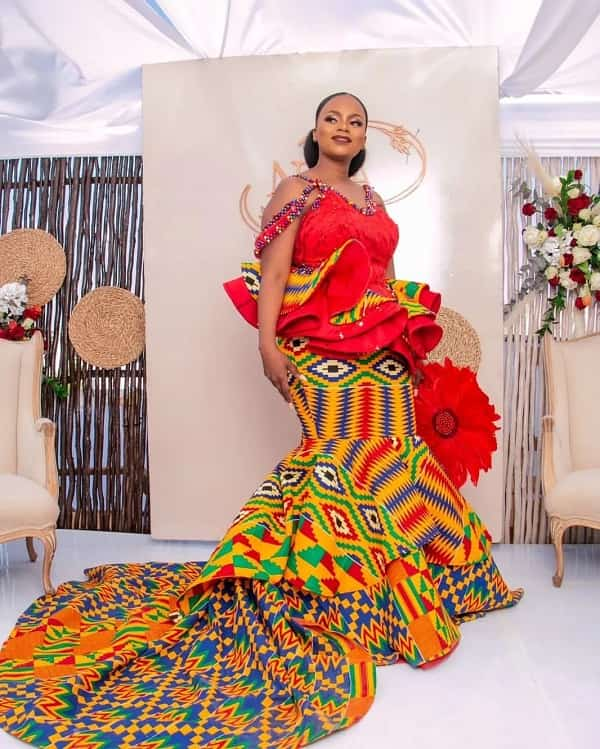 Photo: Instagram/N.i.m_Couture
Photo: Instagram/N.i.m_Couture Kente cloth, according to Ashanti tradition, was invented by two hunters who came across a big spider constructing an amazing web. They were so in awe of its beauty that they resolved to make their own version, and so kente cloth came into existence. Kente cloth was subsequently adopted as the fabric of royalty after they showed their invention to the Ashanti king.
The making of these bold prints requires a lot of effort. First, 4′′ strips of fabric are woven in vibrant stripes, shapes, and textures on a small wooden loom. Then, to make the ornate woven cloth, numerous strips are stitched together in complicated designs.
Ankara Prints (aka Wax Prints or Batik)
It’s beautiful to see Ankara prints. Their vivid colors and designs speak for themselves. You’ll undoubtedly adore Ankara patterns if you enjoy outstanding and magnificent designs. This style has gained popularity and is typically referred to as an African wax print.
Some other names for this African pattern include kitenge and Dutch wax print. This print was produced by the Dutch using the “Batik” method, which is still commonly used today. The Ankara print is currently so popular that it is utilized to make a wide variety of fashionable things, including handbags, shoes, scarves, earrings, necklaces, and other accessories.
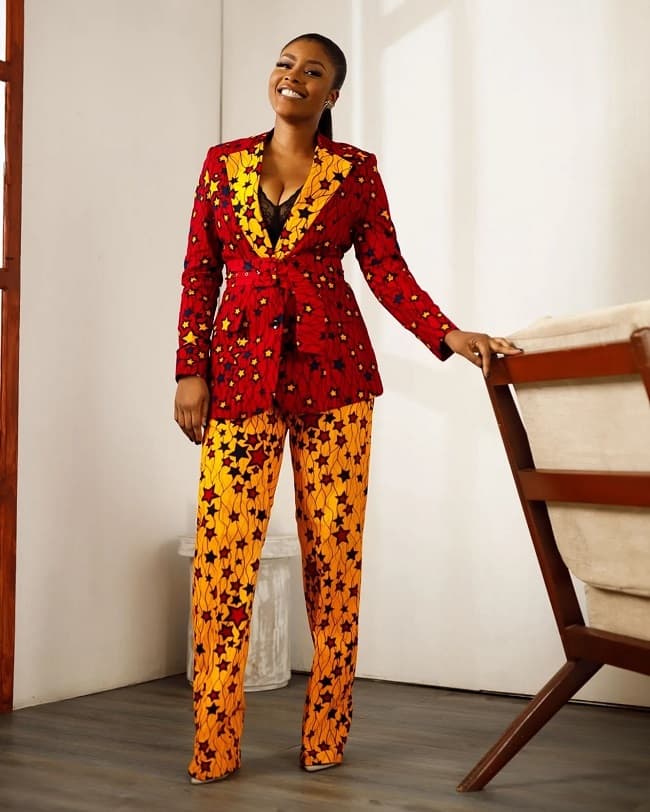 Photo: Instagram/Bubu.blaq
Photo: Instagram/Bubu.blaq The genuine wax printing of Ankara involves melting the wax and carefully applying it by hand to the fabric, which is then dyed a vibrant color. Multiple iterations of this wax-and-soak procedure using different colors result in elaborate multicolored patterns.
Around the world and in all Afrocentric circles, various cultures created their own versions of wax printing. In contrast to other printed textiles, which quickly fade, one of the best things about Ankara fabric is that the intensity of its prints does not vary and this is because of the “wax resistant” printing method applied to the fabrics.
Mudcloth (Bologan)
The word “Bogolan” literally means “made of mud.” Extracts of dried herbs, roots, and fruits are used as dyes in this African print.
Historically, mudcloth was produced from actual riverbed mud that had been fermented for up to a year in clay jars. But today, mudcloth prints are associated with strong geometric patterns that are created in black and placed on a background of white or a solid color.
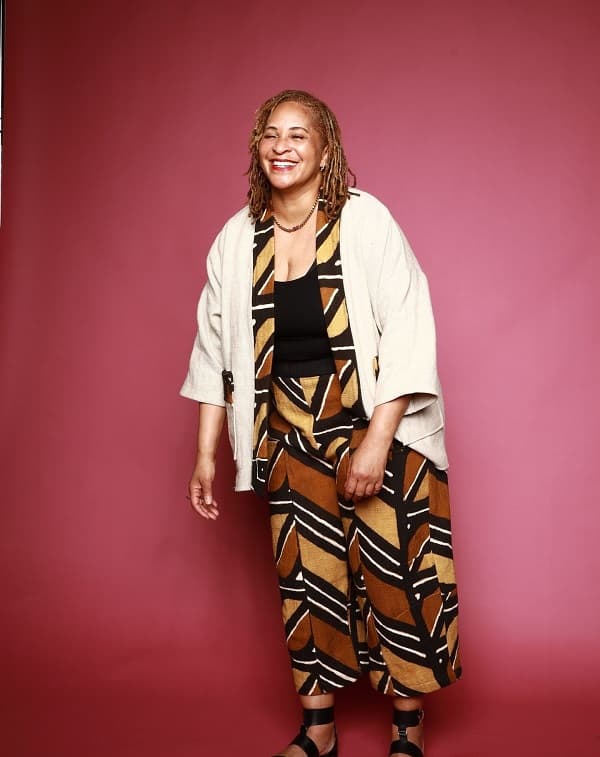 Photo: Instagram/oakouture2022
Photo: Instagram/oakouture2022 The Bamana culture of Mali invented the mudcloth in the 12th century. Men would traditionally weave fabric in tiny strips on looms, and after the strips were sewn into lengths of cloth, women would paint and dye the fabric.
Dashiki (aka Angelina Prints)
Dashiki is a long, baggy upper clothing with colorful embroidery along the V-neck, sleeves, and hem. The dashiki, which was first worn by men in West Africa, is quite well-known throughout the world and has long been linked to black pride and unification. It rose to popularity in the United States during the Civil Rights Movement.
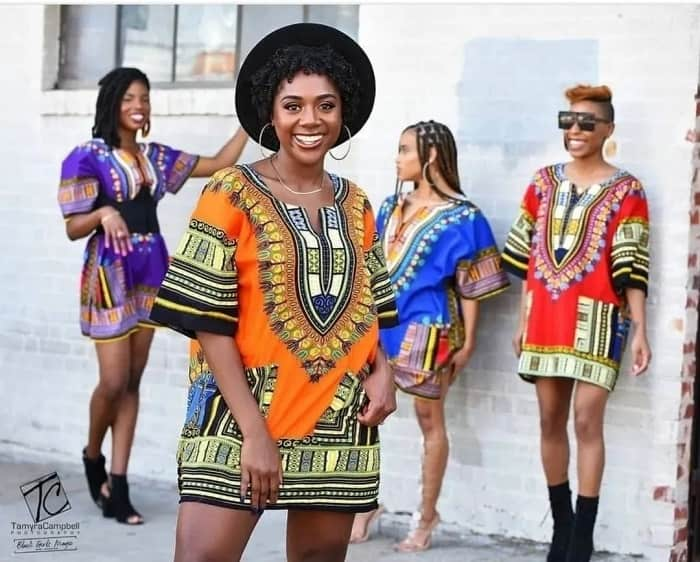 Photo: Instagram/tamcamphoto
Photo: Instagram/tamcamphoto These days, the dashiki prints can now be found on a lot more items than only men’s shirts. Modern caftans, dresses, tunics, and women’s pantsuits all feature versions of the traditional dashiki pattern. The prints are available in many shades and patterns.
Animal Prints
Although not a typical African print, animal print clothing is more Afrocentric than western. This is so because several of these creatures have close ties to the biodiversity and wildlife in Africa. For instance, the aristocracy in Zulu society in South Africa valued leopard skins.
In addition, stunning African native animals like tigers [isi agu], zebras, giraffes, and many other popular animal prints have their origins there. It was frequently thought that if one wore an animal’s skin, they would gain that animal’s power.
But nowadays, animal designs are more about conveying a playful vibe. They are also fascinating, self-assuring, and exotic.
Generally speaking, African print clothing is unique, especially when it comes to representing Africa to the rest of the globe. There are a ton of these African pattern collections, and nothing could be more “Proudly African” than incorporating them into your wardrobe staples and letting your everyday style show them off.



